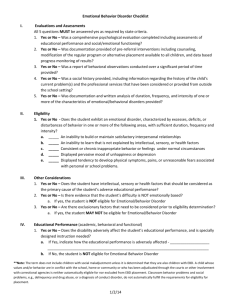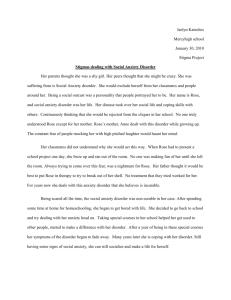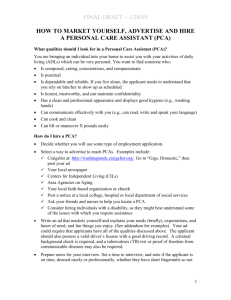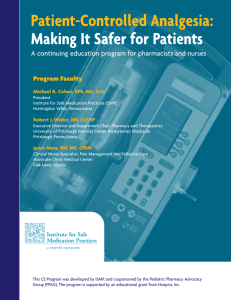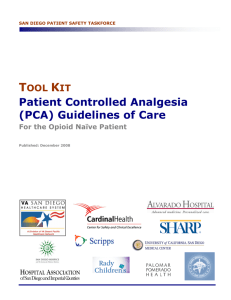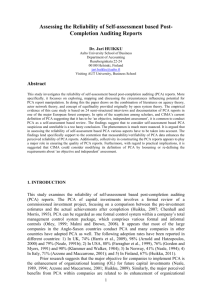Implications of EBD:
advertisement
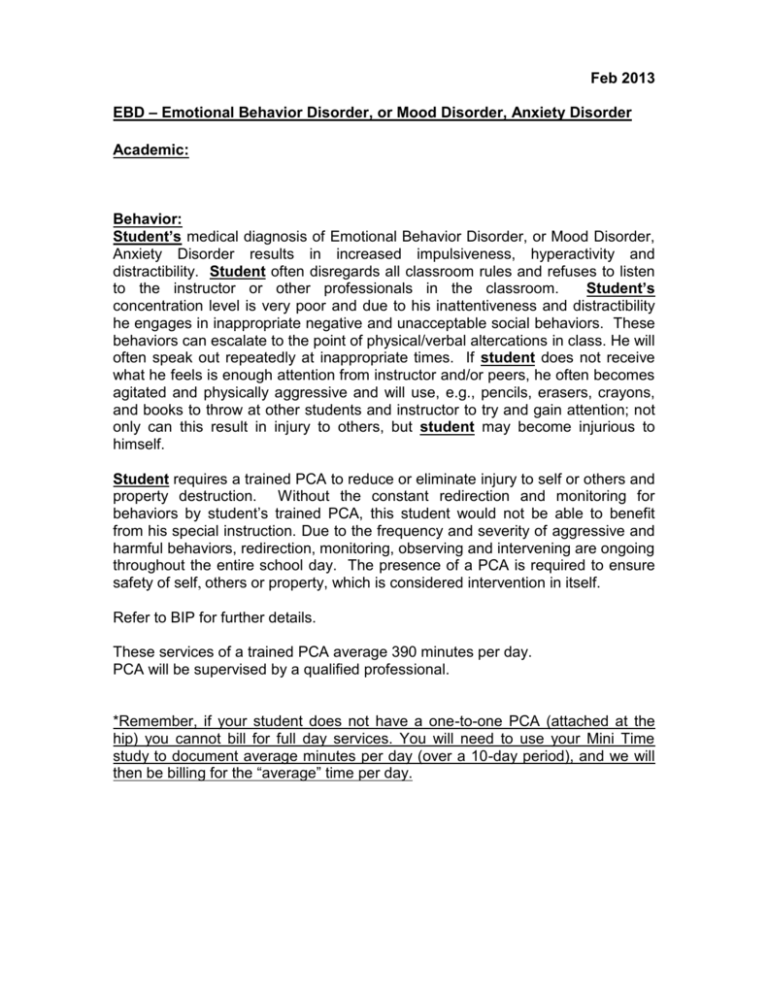
Feb 2013 EBD – Emotional Behavior Disorder, or Mood Disorder, Anxiety Disorder Academic: Behavior: Student’s medical diagnosis of Emotional Behavior Disorder, or Mood Disorder, Anxiety Disorder results in increased impulsiveness, hyperactivity and distractibility. Student often disregards all classroom rules and refuses to listen to the instructor or other professionals in the classroom. Student’s concentration level is very poor and due to his inattentiveness and distractibility he engages in inappropriate negative and unacceptable social behaviors. These behaviors can escalate to the point of physical/verbal altercations in class. He will often speak out repeatedly at inappropriate times. If student does not receive what he feels is enough attention from instructor and/or peers, he often becomes agitated and physically aggressive and will use, e.g., pencils, erasers, crayons, and books to throw at other students and instructor to try and gain attention; not only can this result in injury to others, but student may become injurious to himself. Student requires a trained PCA to reduce or eliminate injury to self or others and property destruction. Without the constant redirection and monitoring for behaviors by student’s trained PCA, this student would not be able to benefit from his special instruction. Due to the frequency and severity of aggressive and harmful behaviors, redirection, monitoring, observing and intervening are ongoing throughout the entire school day. The presence of a PCA is required to ensure safety of self, others or property, which is considered intervention in itself. Refer to BIP for further details. These services of a trained PCA average 390 minutes per day. PCA will be supervised by a qualified professional. *Remember, if your student does not have a one-to-one PCA (attached at the hip) you cannot bill for full day services. You will need to use your Mini Time study to document average minutes per day (over a 10-day period), and we will then be billing for the “average” time per day. Emotional Behavior Disorder Implications of EBD: Disruptive to classroom activity. Impulsive. Inattentive, distractible. Appears pre-occupied. Disregards all classroom rules. Poor concentration. Extreme resistance to change and transitions. Speaks out, repeatedly. Is aggressive. Bullies and intimidates others. Regular truancy from school. Dishonest, consistently blames others. Low self esteem. Unable to work in groups. Engages in self injurious behavior. Has no regard for personal space and belongings. Persistently tries to manipulate situations. Best Practices and Accommodations Develop consistent behavior expectations. Involve the student in setting academic and personal goals. Engage in role playing situations. Communicate with parents so that strategies are consistent at home and school. Set limits and boundaries. Apply established consequences immediately, fairly and consistently. Acknowledge and reinforce acceptable behavior. Avoid confrontation and power struggles. Provide a highly structured classroom environment. Clearly post rules and expectations. Establish a quiet cool off area. Provide and teach opportunities for the student to use self control/self monitoring techniques to control behavior. Teach self talk to relieve stress and anxiety. Teach and provide time for relaxation techniques. Establish cues as reminders for inappropriate behavior. Redirect to avoid situations that may increase anxiety levels. Remain calm and aware of your body language when addressing the student. Provide a positive and encouraging classroom environment. Use a study carrel. Use visually stimulating material for assignments/learning presentations. Use specialized technology and software. Develop and use behavior contracts. Give frequent feedback.


